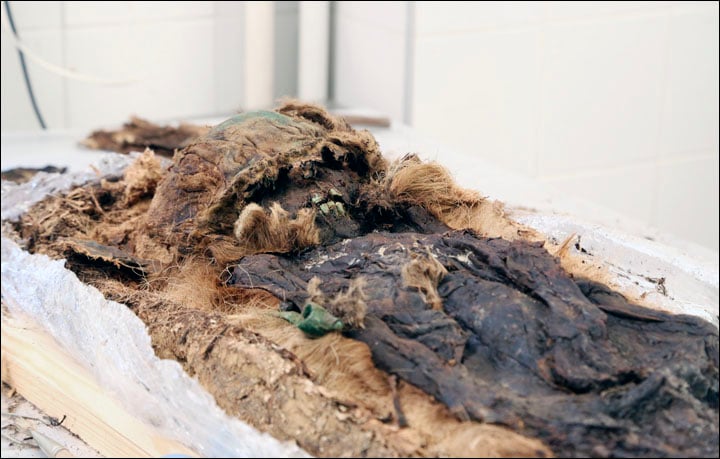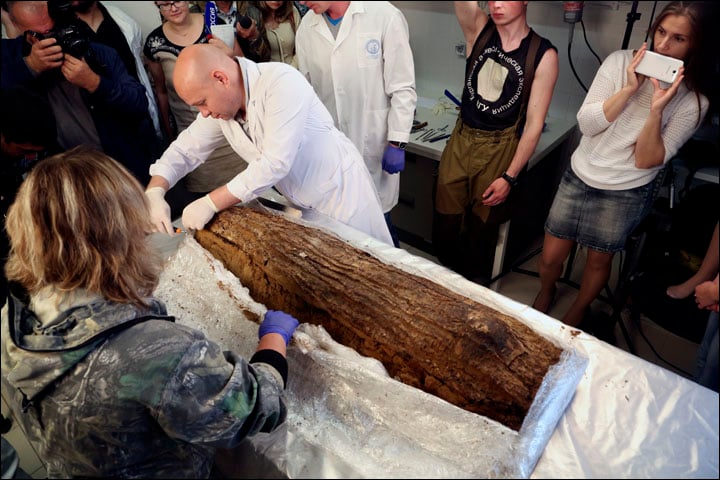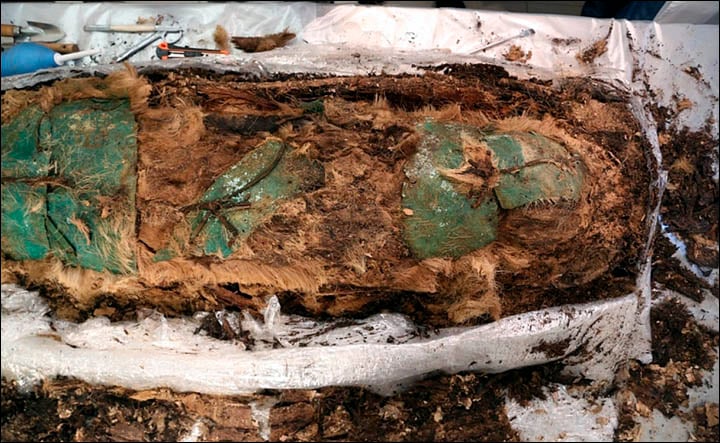Art World
Mysterious Axe Wielding Child Warrior Mummy Found in Siberia


Henri Neuendorf

The mummified remains of a child discovered in Siberia have left archeologists baffled.
The mummy of the six or seven year old boy, who is estimated to have died in the 12th or 13th century, was discovered near the remote arctic town of Salekhard. Judging by the tools he was buried with, researchers believe the mummy may have belonged to a “lost” ancient Persian civilization.
Carefully encased in copper and bark and buried in the Siberian permafrost, the mummy was discovered in a superbly preserved condition.
Discovered with a bronze axe, sharp tools, and a metal bear-shaped pendant, the bizarre accouterments the child was buried with have left archaeologists bewildered.

The mummy was encased in bark and preserved by the Siberian permafrost soil. Photo courtesy of the Yamal-Nenets Regional Museum-Exhibition Complex.
Researcher Natalia Fyodorova of the Russian Academy of Sciences told the Daily Mail, “Other children were buried in a wooden sarcophagus, but here we found some oval wooden construction.”
She added, “The other difference is that here we can see many things buried with this child. Axe, pendant, bronze rings. It is not typical.”
The team of experts believe the evidence indicates that the boy may have been from a royal or wealthy family.

Archaeologists have discovered a well-preserved mummy of a child warrior, wrapped in reindeer hide and fur, near the Arctic. Photo courtesy of the Yamal-Nenets Regional Museum-Exhibition Complex.
Archaeologists have found 34 other ancient corpses around the area, 11 of which showed signs of intense damage such as smashed skulls and broken bones. The injuries suggest that the mysterious ancient civilization was involved in violent conflicts.
The team of researchers admit that there’s much they don’t understand about this unknown culture. The newly discovered remains are now set to travel to Ekaterinburg for a more detailed analysis.